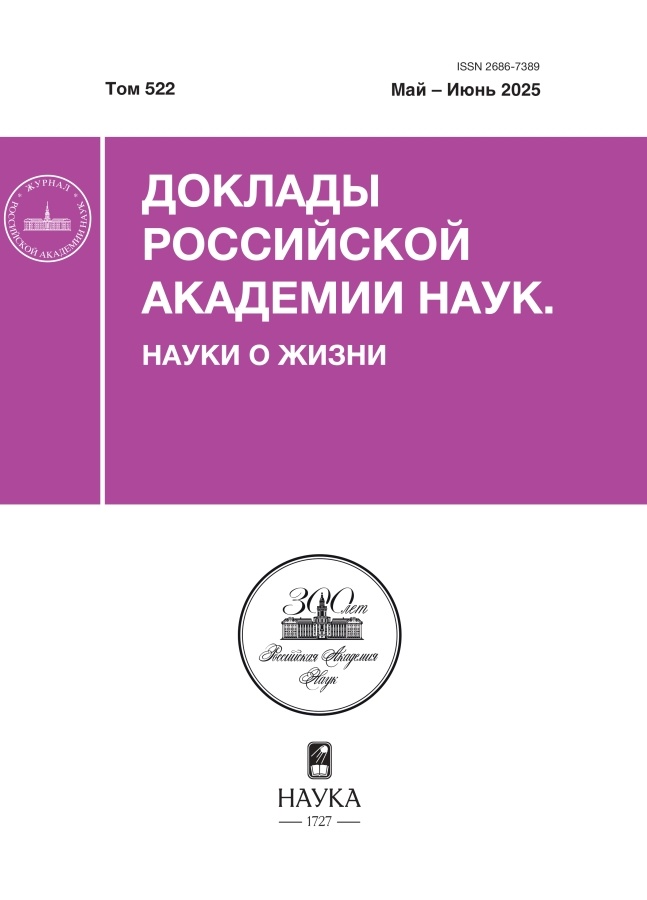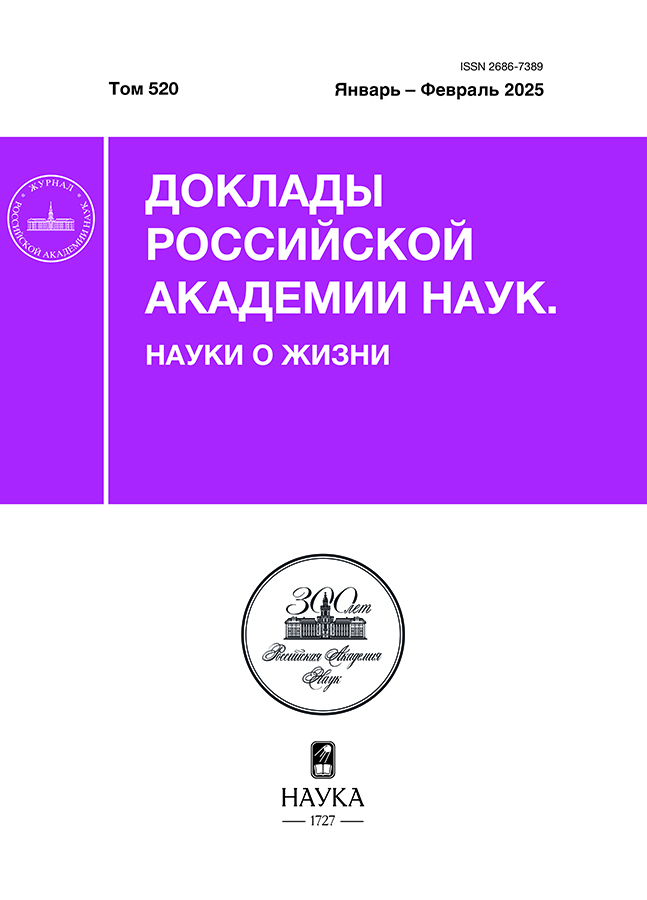Low-molecular-weight ligand of the thyroid-stimulating hormone receptor with the activity of a partial agonist and a negative allosteric modulator
- Authors: Derkach K.V.1, Didenko E.A.1,2, Sorokoumov V.N.1,2, Zakharova I.O.1, Shpakov A.O.1
-
Affiliations:
- I.M. Sechenov Institute of Evolutionary Physiology and Biochemistry, Russian Academy of Sciences
- St. Petersburg State University
- Issue: Vol 520, No 1 (2025)
- Pages: 122-127
- Section: Articles
- URL: https://ter-arkhiv.ru/2686-7389/article/view/682060
- DOI: https://doi.org/10.31857/S2686738925010208
- EDN: https://elibrary.ru/tbhkym
- ID: 682060
Cite item
Abstract
Graves’ disease is caused by overactivation of the thyroid-stimulating hormone receptor (TSHR). One approach for its treatment may be the use of negative allosteric modulators (NAM) of TSHR, which normalize TSHR activity and do not cause thyroid hormone (TH) deficiency. The aim of the work was to study the effect of a new compound 5-amino-4-(4-bromophenyl)-2-(methylthio)thieno[2,3-d]pyrimidine-6-carboxylic acid N-tert-butylamide (TPY4) on the basal and TSH-stimulated TH production in cultured FRTL-5 thyrocytes and on basal and thyrotropin-releasing hormone (TRH)-stimulated TH levels in the blood of rats. TPY4 stimulated TH production by thyrocytes and increased TH levels when administered intraperitoneally and orally in rats. It also decreased the TSH-stimulated TH production in thyrocytes and the TRH-stimulated TH levels in rats. Thus, TPY4 is the first known allosteric regulator of TSHR, combining the properties of NAM and a partial agonist, and can be considered as a prototype of drugs for the treatment of Graves’ disease.
Full Text
About the authors
K. V. Derkach
I.M. Sechenov Institute of Evolutionary Physiology and Biochemistry, Russian Academy of Sciences
Email: alex_shpakov@list.ru
Russian Federation, St. Petersburg
E. A. Didenko
I.M. Sechenov Institute of Evolutionary Physiology and Biochemistry, Russian Academy of Sciences; St. Petersburg State University
Email: alex_shpakov@list.ru
Institute of Chemistry, St. Petersburg State University
Russian Federation, St. Petersburg; St. PetersburgV. N. Sorokoumov
I.M. Sechenov Institute of Evolutionary Physiology and Biochemistry, Russian Academy of Sciences; St. Petersburg State University
Email: alex_shpakov@list.ru
Institute of Chemistry, St. Petersburg State University
Russian Federation, St. Petersburg; St. PetersburgI. O. Zakharova
I.M. Sechenov Institute of Evolutionary Physiology and Biochemistry, Russian Academy of Sciences
Email: alex_shpakov@list.ru
Russian Federation, St. Petersburg
A. O. Shpakov
I.M. Sechenov Institute of Evolutionary Physiology and Biochemistry, Russian Academy of Sciences
Author for correspondence.
Email: alex_shpakov@list.ru
Russian Federation, St. Petersburg
References
- Gao Y., Qiu L., Yu S., et al. Thyroid stimulating receptor autoantibodies // Clin. Chim. Acta. 2024. V. 559. P. 119700.
- Kleinau G., Biebermann H. Constitutive activities in the thyrotropin receptor: regulation and significance // Adv. Pharmacol. 2014. V. 70. P. 81–119.
- Corvilain B., Hamy A., Brunaud L., et al. Treatment of adult Graves’ disease // Ann. Endocrinol. (Paris). 2018. V. 79(6). P. 618–635.
- Ruslan A., Okosieme O.E. Non-thionamide antithyroid drug options in Graves’ hyperthyroidism // Expert Rev. Endocrinol. Metab. 2023. V. 18(1). P. 67–79.
- Eckstein A., Stöhr M., Görtz G.E., et al. Current Therapeutic Approaches for Graves’ Orbitopathy – are Targeted Therapies the Future? // Klin. Monbl. Augenheilkd. 2024. V. 241(1). P. 48–68. English, German.
- Galofré J.C., Chacón A.M., Latif R. Targeting thyroid diseases with TSH receptor analogs // Endocrinol. Nutr. 2013. V. 60(10). P. 590–598.
- Kahaly G.J., Steiner L., van der Lee M.M.C., et al. Thyrotropin Receptor Antagonism by a Novel Small Molecule: Preclinical In Vitro Observations // Thyroid. 2023. V. 33(6). P. 732–742.
- Marcinkowski P., Hoyer I., Specker E., et al. A New Highly Thyrotropin Receptor-Selective Small-Molecule Antagonist with Potential for the Treatment of Graves’ Orbitopathy // Thyroid. 2019. V. 29(1). P. 111–123.
- Shpakov A.O. Allosteric Regulation of G-Protein-Coupled Receptors: From Diversity of Molecular Mechanisms to Multiple Allosteric Sites and Their Ligands // Int. J. Mol. Sci. 2023. V. 24(7). P. 6187.
- Derkach K.V., Fokina E.A., Bakhtyukov A.A., et al. The Study of Biological Activity of a New Thieno[2,3-D]-Pyrimidine-Based Neutral Antagonist of Thyrotropin Receptor // Bull. Exp. Biol. Med. 2022. V. 172(6). P. 713–716.
- Derkach K.V., Bakhtyukov A.A., Sorokoumov V.N., et al. Low Molecular Weight Thyrotropin Receptor Inverse Agonist is Active upon both Intraperitoneal and Oral Administration // J. Evol. Biochem. Physiol. 2024. V. 60(1). P. 295–305.
- Albi E., Perrella G., Lazzarini A., et al., Critical role for the protons in FRTL-5 thyroid cells: nuclear sphingomyelinase induced-damage // Int. J. Mol. Sci. 2014. V. 15(7). P. 11555–11565.
- Gershengorn M.C., Neumann S. Update in TSH receptor agonists and antagonists // J. Clin. Endocrinol. Metab. 2012. V. 97(12). P. 4287–4292. https://doi.org/10.1210/jc.2012-3080
- Latif R., Realubit R.B., Karan C., et al. TSH Receptor Signaling Abrogation by a Novel Small Molecule // Front. Endocrinol. (Lausanne), 2016. V. 7. P. 130.
- Latif R., Morshed S.A., Ma R., et al. A Gq Biased Small Molecule Active at the TSH Receptor // Front. Endocrinol. (Lausanne). 2020. V. 11. P. 372. https://doi.org/10.3389/fendo.2020.00372
- Nagayama Y., Nishihara E. Thyrotropin receptor antagonists and inverse agonists, and their potential application to thyroid diseases // Endocr. J. 2022. V. 69(11). P. 1285–1293.
Supplementary files











